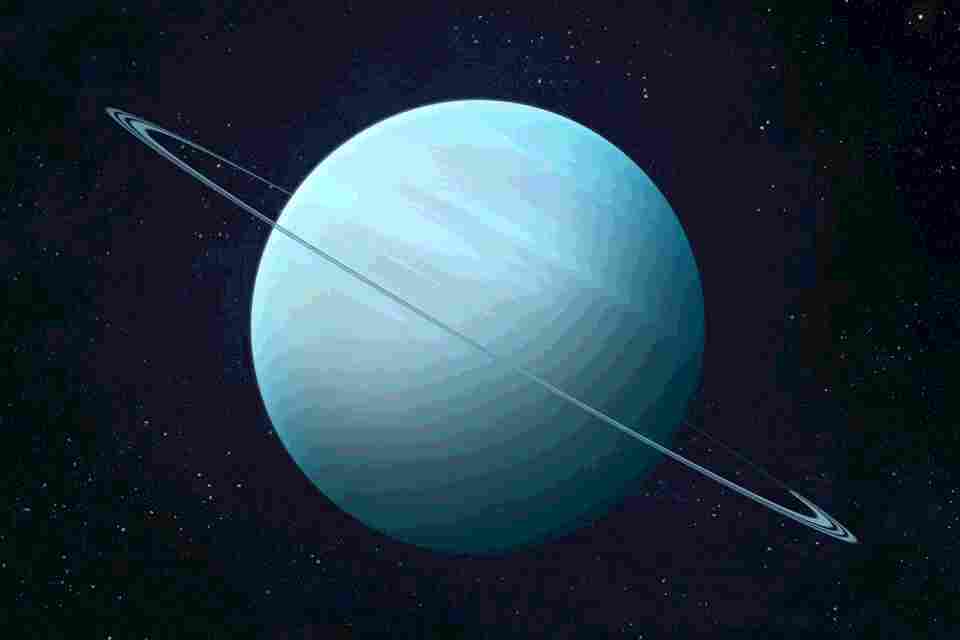Technology
What a Nasa mission to icy planet Uranus could look like, according to experts

AN influential panel of experts has suggested that Nasa send a spacecraft to Uranus – here’s how the mission could unfold.
Uranus, the coldest planet in our solar system, should get a visit from Nasa – at least, that’s what a group of US planetary scientists advise in a new report.
A panel of experts thinks that Nasa should send a spacecraft to Uranus
The recommendation was published by the US National Academies of Sciences, Engineering, and Medicine in Washington DC on April 19.
Stemming from a process known as the decadal survey, the annual recommendations offer Nasa guidance for prioritizing science goals – and they almost always listen.
Proposed in the latest report is the concept that Nasa sends a flagship mission to Uranus to study the formation of the planet, its rings, and its moons.
“This mission will be absolutely transformative,” says Amy Simon, a planetary scientist at Nasa’s Goddard Space Flight Center in Greenbelt, Maryland.
Located 1.925 billion miles away from Earth, ‘ice giant’ Uranus has not been a planet of interest since 1986 when Voyager 2 did a fly-by.
This, many experts say, seems to be an oversight on Nasa’s part given that Uranus is a scientific mystery waiting to be uncovered.
For example, Uranus rotating almost entirely on its side and having developed a complex magnetic field are things we do not yet understand about the planet.
Furthermore, scientists believe that Uranus could offer invaluable insight into exoplanets outside of our solar system as many of them are of similar size and makeup, per Scientific American.
Most read in Tech
The most obvious reason Nasa should go to Uranus, though, is that it’s “technologically achievable right now,” Simon said.
How might the mission work?
A mission to Uranus could launch aboard a commercial Falcon Heavy rocket as early as 2031 – if it was fully funded, the report proposed.
The mission could then release a probe towards Uranus to explore its winds, atmosphere, and composition.
Meanwhile, the main spacecraft would do flybys to collect data on Uranus’ magnetic field, and some of its 27 known moons – likely Titania and Oberon, which may host water.
“We are talking about a mission to study the entire Uranus system,” Mark Hofstadter, a planetary scientist at the Jet Propulsion Laboratory in Pasadena, California, told Scientific American.
How much would it cost?
A mission to Uranus would likely cost Nasa up to $4.2 billion, experts have estimated.
However, some scientists have proposed a ‘New Frontier’ mission, which typically costs around the $900 million price point, Space.com noted.
The problem with this budget is that it may not yield adequate results.
“A New-Frontiers level mission could only just scratch the surface, unable to explore the full ice giant system in all its rich diversity surface,” Leigh Fletcher, a planetary scientist at the University of Leicester who participated in the decadal survey process told Space.com.
“To fully explore Uranus we need to be in orbit, exploring the interior, atmosphere, and magnetosphere, and touring the myriad icy moons and rings,” he added.
“If it’s worth doing, then it’s worth doing properly!”
There may be hope for the conceptual mission, though, if Nasa partners with the European Space Agency (ESA).
Read More On The Sun
“The key question now is whether there’s room in national budgets and ESA’s science program for an ambitious partnership,” Fletcher said.
“We’ll have to wait and see.”
We pay for your stories!
Do you have a story for The US Sun team?
Email us at exclusive@the-sun.com or call 212 416 4552.
Like us on Facebook at www.facebook.com/TheSunUS and follow us from our main Twitter account at @TheSunUS

